

Tao Te Ching
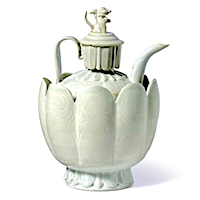
Northern Song (960 – 1127 CE)
The chaos of the previous, fragmented years ended when a general led a coup d'état, reunified most of China, established an authoritarian central government, and became Emperor Taizu of Song. During this dynasty, the population tripled to over 100 million people, gunpowder technology developed revolutionary new weapons, and launched the world's most major experiment with a socialistic government. The central government was strengthened by decreasing the power of officials and generals which helped unify China internally but also made it weaker externally and vulnerable to external attack. Zhu Xi reinvigorated Confucianism by blending it with Buddhist and Taoist teachings to begin Neo-Confucianism, reorganized and prioritized classic texts, revised and restarted the civil service examinations which diverted power from the aristocrats and military to a bureaucratic elite.
Sages (64)
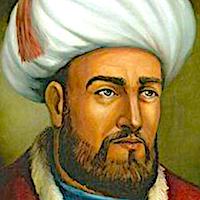
Al-Ghazali أبو حامد محمد بن محمد الطوسي الغزالي (Abu Hamid Al-Ghazali)
1058 – 1111 CE
Philosopher of Sufism
Legal and theological scholar, rationalist, spiritual philosopher, and Sunni mystic; Al-Ghazali became known as a Mujaddid, a once-in-a-century Muslim "renewer of the faith." Believing that the original Islamic teaching quickly became corrupted, he worked to bring the original wisdom back into awareness and—as a side-effect—brought a critique of the Aristotelian approach that facilitated the advancement of European science. He helped integrate Sufism into mainstream Islam and his teaching became a profound influence and foundation for Islamic business ethics and practice.
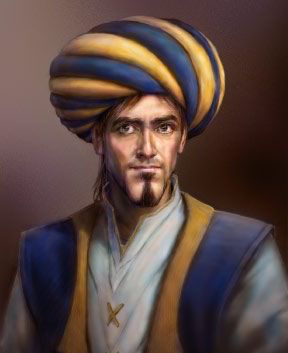
Alhazen بوعلی محمد بن حسن بن هیثم (Ibn al-Haytham)
965 – 1044 CE
One of the most famous and influential Iraqis, philosopher, engineer, astronomer, animal psychologist and one of the first theoretical physicists,; Alhazen understood, used, and promoted the scientific method 200 years before Renaissance scientists. Well-known and honored as "The Physicist" in medieval Europe and writing more than 200 books, he made huge contributions in the fields of optics, astronomy, mathematics, visual perception, and the scientific method. His work on a magnifying lens laid the foundation and inspiration for Roger Bacon and friends’ creation of microscopes and the telescope. He was the first to describe how vision occurs as well as the camera obscura effect on which all photography depends. Apostle of critical thinking and skepticism, he advocated becoming “an enemy of all we read, attacking it from every side.”
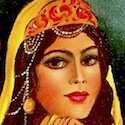
Arwa al-Sulayhi (Al-Malika al-Ḥurra)
1048 – 1138 CE
The stellar example in Muslim history of an independent queen; Arwa ruled Yemen, was the greatest leader during the Sulayhid Dynasty, and was - for the first time in the entire history of Islam - a woman given the title of hujja, the highest status in Islam. Extremely beautiful, intelligent, scholarly, brave, and powerful; she studied science, poetry, history, completed practical and beneficial infrastructure projects, supported agriculture, and built many schools. Her direct lineage continues today in both Yemen and India.

Atisha ཨ་ཏི་ཤ་མར་མེ་མཛད་དཔལ་ཡེ་ཤེས་ (Atiśa Dīpaṃkara Śrījñāna)
980 – 1054 CE
One of the major figures in classical Buddhism, Atiśa inspired students and teachers from Tibet to Sumatra. Born into royalty in the capital of the Pala Empire, Atiśa became a monk and scholar said to have studied with more than 150 different teachers. Founder of the Kadam School, he traveled and taught widely. In The Seven Points of Mind Training he condensed Buddhist teachings into easy-to-remember slogans. The lineage of people using this technique includes Aesop, Balthasar Gracian, Ben Franklin, Erasmus, Yang Xiung as well as The Dhammapada.
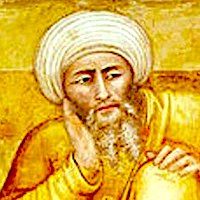
Averroes, Ibn Rushd ابن رشد
1126 – 1198 CE
Polymath, famous Islamic philosopher and scientist, theologian, and physician; Averroes took the position that the Koran and sacred writings were allegories and not to be taken literally. Arguing for an understanding deeper than just the literal meaning of texts, he popularized Aristotle and started a major Jewish and Christian philosophical movement but didn’t become influential in the Muslim world until the 19th century. In fact, during his lifetime, all his books that could be found were burned, he was removed from his positions, and exiled. Dante described him as he "who made the Great Commentary,” Chaucer listed him as a great medical authority, Raphael painted him into a fresco in the Apostolic Palace in the Vatican that depicts major philosophers, Borges featured him in one of his books, and a plant genus, a lunar crater and an asteroid were named after him.
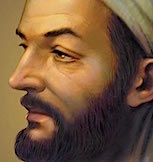
Avicenna أبو علي الحسين بن عبد الله بن الحسن بن علي بن سينا (Ibn-Sīnā)
980 – 1037 CE
Persian polymath, spur to the Islamic Golden Age, poet, doctor, scientist, philosopher and one of the most significant thinkers and writers of his time; Avicenna wrote over 450 books one of which became the standard medical text for European universities up until as late as 1650. With influence from Plato and Aristotle, he clarified the distinction between the words and the sense, taught a spiritual path beyond motivations of hope and fear, reconciled the conflict between reason and faith, and his works according to Will Durant, “mark the apex of medieval thought and constitute one of the major syntheses in the history of the mind.”

Bhikṣanapa བྷི་ཀྵ་ན་པ། ("Siddha Two-Teeth")
940 CE –
Mahasiddha #61
Bhikshanapa བྷི་ཀྵ་ན་པ། “Siddha Two-Teeth” (10th century CE)
Low caste and very poor, Bhikshanapa unexpectedly inherited some wealth. Like most people today winning a lottery or inheriting unaccustomed riches, he quickly lost it all along with his fair-weather friends. This led to a period of intense self-loathing and depression but also an openness to meeting and hearing a teacher and new way of experiencing the world. Seeing through his consumerism andspiritual materialism, he metaphorically (and possibly physically too), lost all but two of his teeth which became symbols for the balance and harmony of wisdom and skillful means. Resuming his external life style of roaming from village to village, he transformed from a miserable, needy beggar only thinking about himself into a wonderful teacher constantly dedicated to helping others. Mahasiddha #61
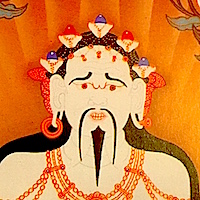
Campaka ཙ་མྤ་ཀ (“The Flower King”)
820 CE –
Mahasiddha #60
Extremely wealthy, powerful, caught up in pleasure, and sitting on a throne made from sweet-smelling flowers; Kampala met a wandering yogi. He tried to impress the sage with the splendors of his kingdom and the beauty of his flowers but the sage told him the truth, that his flowers smelled great but his body not so much, that his realm was wonderful but before long it and he would be gone. Realizing the superficiality and meaninglessness of his life, Kampala began a spiritual path but only shifted his physical materialism into spiritual materialism. Directed to focus his meditation on “the flower of pure reality,” he practiced and finally realized the empty essence of his mind. Mahasiddha #60

Cao Daochong 道寵 (Daochong or Ts’ao Tao-Ch’ung)
fl. 960 - 1268
Mysterious Taoist nun during the Tang Dynasty, Cao Daochong walked in Lao Tzu’s footsteps of inscrutability and disregard for fame and fortune. Though unassuming and humble, her deep insight, wisdom, and compassion speak through the centuries through her book, the Lao-tzu-chu. Living during the time of the great Mahasiddhas in India, Naropa and a major transmission of Buddhism into Tibet, she was a contemporary of other great women teachers like Dharima, Manibhadra, Niguma, Arwa al-Sulayhi, Heloise, and Hildegard of Bingen.
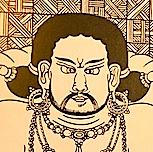
Cauraṅgipa ཙཽ་རངྒི་པ། ("The Dismembered Stepson")
10th century CE
Mahasiddha #10
Saintly son of a king, Cauraṅgipa’s arms and legs were cut off when he refused the amorous advances of his step-mother who lied and slandered him. The servants offered to take the body parts from their own children but he refused, not wanting to cause harm to others. Left to die under a tree, he met his guru Minapa who gave him meditation practices that saved his life and led to his complete realization, “the one taste of all things.” His physical loss of limbs became a foundation and benefit to his practice. (graphic credit: Robert Beer) #10
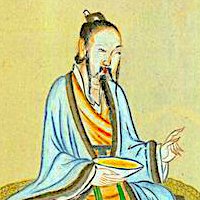
Cheng Zhu 程俱 (Ch‘eng, Chü, Zheng, Ru, Ju Cheng)
1078 – 1144 CE
Neo-Confucian founding uncle
Political critic and scholar-official, Cheng Zhu became a major critic of the political policies of his era and an important influence on the development of neo-Confucianism. A philosophical school named after him became a strong influence advocating morality as the foundation for political leadership.
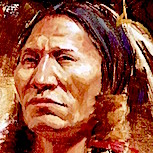
Deganawida (“The Great Peacemaker”)
12th century CE
Founder of the largest and most powerful Native American union, the Iroquois League, "The Great League of Peace" based on sharing and cooperation that established the world’s the oldest participatory democracy and brought a golden age to the native American tribes in the Great Lakes/ New York region for hundreds of years, Deganawida worked all his life bringing this vision to our world. Deeply admired by George Washington and Ben Franklin, this League was a big influence on the original thirteen colonies becoming one republic, on furthering the democratic principles included in the US Constitution, modeling and inspiring the League of Nations and now the United Nations. Identified by many members of the Bahá'í Faith with their founder Bahá'u'lláh, Deganawida continues as a voice of peace and sanity in our modern world.
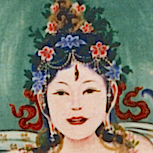
Dharima
10th century CE
Prostitute, consort of the famous Mahasiddha Tilopa, slave owner and student of Mahasiddha Luipa (probably a different person with same name and profession); Dharima and Tilopa started on this spiritual path together, practiced together for many years, and when enlightened taught together. They learned the "Illusory-body" yoga from Nagarjuna’s tradition, Dream yoga from Caryapa, Cakrasamvara and the Clear Light from Lavapa, and from the woman saint Subhagini, Candalini-yoga and the Hevajra tantra. They forged these 4 traditions into what became the Kagyu lineage of Mahamudra that continues powerfully today through teachers like Chogyam Trungpa and the Karmapas.
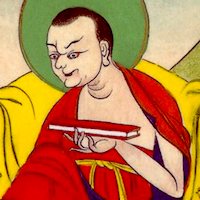
Dharmapa thos pa’i shes rab bya ba
915
“The Perpetual Student” — Mahasiddha #36
Dharmapa lived his life as a scholar, a professor, a pandita. He spent his entire life studying and teaching but gave little time or attention to meditation or other practices. He didn't become aware of the gap this left in his awareness until he was old and blind. He realized his need for a teacher but was no longer in a position to fine one. A dakini appeared in a dream however, and taught him the difference between analytical understanding and realization. He showed Dharmapa how he could—like a blacksmith melting pieces of iron into a single ingot—melt all the disparate strands of his knowledge into a unified experience of true mind and wisdom.
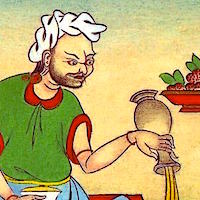
Dhilipa དྷི་ལི་པ། (“The Epicurean Merchant”)
10th century CE
Mahasiddha #62
Dhilipa had a sesame oil pressing business that did really well and made huge profits. He devoted this wealth to personal pleasure-seeking and is said to have had at each meal 84 main courses, 12 deserts, and 5 kinds of beverages prepared by the best chefs of the time. After one of these sumptuous banquets, a dharma teacher guest questioned him about how far his pleasure seeking was really taking him and pointed out that he could go on making more and more money but it wouldn’t bring him any more true happiness or realization. Like he extracted oil from sesame seeds, Dhilipa then extracted dualistic concepts from experience, realized the union of opposites, and burned the pure flame of awareness. Mahasiddha #62
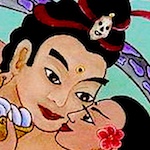
Dombipa
10th C. CE
Enlightened ruler of Magadha (Kashmir), Dombipa treated all his subjects like a “father would treat his only child” but his country suffered almost endless war, crime, famine, and poverty. He brought back prosperity, peace, and health but when he took a low caste “untouchable” as consort and started drinking large amounts of alcohol, the shocked people forced his abdication. After 12 years when the country’s problems returned, they begged him to return which he did “riding on a pregnant tiger” with his consort. To rule them again, he asked that they abandon the caste system. When they refused he went back into his meditation saying, “My only kingdom is the kingdom of truth.” This lineage continues with the Trungpa Tulkus.

Ferdowsi فردوسی (Abul-Qâsem Ferdowsi Tusi)
940 – 1020 CE
"undisputed giant of Persian literature"
Philosopher, poet, and one of the world's most influential literary figures; Ferdowsi wrote what became Iran's national epic as well as history's longest poem written by a single poet. Considered the "father of the modern Persian language," he influenced all the writers who followed him, regenerated the Persian language, and revived many cultural traditions.
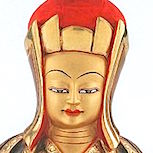
Gampopa སྒམ་པོ་པ། (Sönam Rinchen, Dakpo Rinpoche)
1079 – 1153 CE
Doctor, student of Milereapa, and founder of the Kagyu school of Tibetan Buddhism; Gampopa started as a householder with a family and then became a monk when they died. In a similar way, he changed the yogi/householder style of Marpa and Milarepa into a monastic approach. He integrated Atisha’s Kadam school with the Mahamudra teachings of Milerapa and four of his disciples founded the four main Kagyu schools. Though on the surface, this moved the tradition away from the non-thought, wisdom-beyond-words approach and instead emphasized rules and concepts; stories tell of Taoist teachers and influences on Gampopa, secret practices and teachings he gave in this lineage as well.

Gesar of Ling གེ་སར་རྒྱལ་པོ།
11th century CE
Generally considered a real person in Tibet and Mongolia, a legend like King Arthur by western scholars, Gesar represents the heroism and wisdom necessary to overcoming the negative impulses in society, culture, and government that oppress people and prevents happiness from flourishing. Called the world's last living epic, the Gesar story includes more than 120 volumes, a million verses, and 2100 hours of oral performance - the largest body of epic literature in history. The Gesar epics derives from Indian Buddhism, native Tibetan Bön, and alchemical Taoism. Like Homer’s Iliad, they include performance, poetry, philosophy, education, politics and religion.
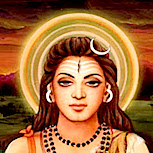
Goraksa ཤྲཱི་གོ་རཀྵ་ནཱཐ྄། (Nāth Siddha Gorakṣa, "The Immortal Cowherd")
10th Century CE
First haha yoga teacher, founder of India’s largest yoga sect, and non-sectarian Tantric leader; Goraksa assimilated Buddhist insight and understanding into a Hindu context free of duality and integrated tantric practices into Buddhist philosophy. His life symbolizes and his teachings reinforce that every condition and situation people find themselves in has equal potential for realizing the highest awareness. He emphasized the potential in even the most negative circumstances and taught to appreciate everything rather than fighting against our experience and trying to attain a fantasy of what we might think is better.
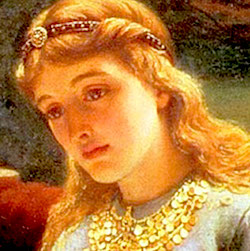
Heloise
1090 – 1164 CE
An orphan raised in a convent, Héloïse became a brilliant scholar, one of the earliest and most radical feminists, a powerful abbess over multiple convents, and half of one of the most famous and talked about relationships of her era. As femme fatale to Peter Abélard when he was on the rise toward becoming a pope, her influence caused him immense humiliation and pain as well as the inspiration for some of the most important books of the time, a regard for the sense over the words, and a declaration of philosophical independence for reason over belief. It’s become a tradition for the hoping-to-find-true love to leave letters at their crypt.
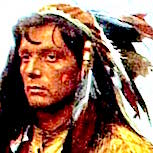
Hiawatha Haiëñ'wa'tha
12th century CE
Shaman, statement, and disciple of Huron prophet and spiritual leader, “The Great Peacemaker” Deganawida; Hiawatha used his charisma and great oratorical skills to spread his teacher’s message of peace and unity bringing together many tribes into the world’s oldest and longest lasting participatory democracy. Deganawida had deep wisdom, vision and spiritual presence but also a severe speech impediment. Like Plato for Socrates, Ashoka for the Buddha, Chuang Tzu for Lao Tzu, Mencius for Confucius, and Paul for Jesus; Hiawatha brought his teacher’s message to the greater world. Gathering the tribal leaders and agreeing on a union, they buried their weapons and on top planted the “Tree of Peace.”

Hildegard of Bingen
1098 – 1179 CE
Circumventing her times’ strong prejudice and bans against women's social, artistic and theological participation, Hildegard became a famous writer, composer, botanist, philosopher, visionary, Christian mystic and the founder of scientific natural history in Germany. The first Westerner credited with describing the healing powers of food and corresponding with the political, religious, and scientific leaders of her day (popes, emperors, saints and scientists), she used her influence to combat corruption, promote spiritual insight, holistic healing, the arts, and women’s role in the world

Hóngzhì Zhēngjué 宏智正覺 (Shōgaku)
1091 – 1157 CE
A highly prolific literary giant, Hongzhi taught “silent illumination,” shikan taza (just sitting), a return to our original nature without gaining ideas, letting go of conditioning in completely relaxed awareness, and a return to the world. These teaching became a root influence on the beginnings of the Soto Zen school. He was abbot of the Tiantong Monastery where later Eihei Dogen studied. Dogan brought these teachings to Japan extensively quoting Hongzhi describing him as an “Ancient Buddha.”
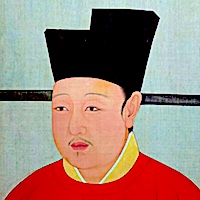
Huizong 徽宗 (Emperor Huizong of Song)
1082 – 1135 CE
Great artist, failed ruler
Polymath, poet, musician, called “one of the greatest Chinese artists of all time,” but an incompetent leader taking disastrous advice to disastrous results; Huizong demonstrated the difficulty of blending art and politics. Collecting over 6000 paintings, he sponsored artists, wrote poems, painted, reformed court music, and wrote dissertations on Taoism, tea ceremony, and medicine. His foreign policy decisions however and military neglect led to a Jurchen invasion and the ending of the Song Dynasty, his demotion to commoner status, and the last 8 years of his life spent as the “Besotted Duke" jailed in a remote, cold province prison. He promoted monumental philanthropic efforts including founding orphanages, hospitals, and schools; but, his failure to balance his religious Taoism with the Confucian mainstream prevented the maintenance of a strong government.
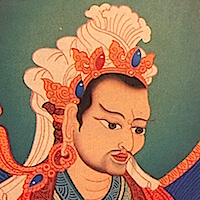
Indrabhūti ཨིནྡྲ་བྷཱུ་ཏི། ("The Enlightened Siddha-King")
892 CE –
Mahasiddha #42
Indrabhuti ཨིནྡྲ་བྷཱུ་ཏི། The Enlightened Siddha-King (late 9th century)
“The first tantrika,” archetypal tantric king, and inspiration for several tantric lineages; Indrabhuti for political reasons pledged his Buddhist sister Laksminkara in marriage to the prince of a neighboring Hindu kingdom. She went to live with the neighboring prince but soon became disillusioned with the materialism, superstition, and decadence of her new country. Late one night she fled the palace and found a cave in the mountains where she lived and practiced meditation, attained enlightenment and scandalously started teaching untouchables. This greatly upset the Hindu king but inspired Indrabhuti to do the same and leave the comfort of palace life to devote himself completely to his spiritual path. He rejected however a path that rejected sensual pleasure and sex and practiced the Guhyasamaja father-tantra in the Anuyoga Dzogchen lineage. Mahasiddha #42
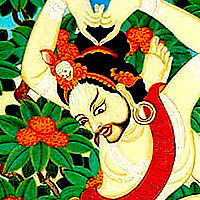
Jālandhara ཛཱ་ལནྡྷ་ར་པ། ("The Ḍākinī's Chosen One")
888 CE –
Mahasiddha #46
Jalandhara ཛཱ་ལནྡྷ་ར་པ། “The Ḍākinī's Chosen One” (late 9th century)
Another wealthy and privileged brahmin who saw through the materialistic values of his culture and renounced it to search for a more meaningful life, Jalandhara left everything to live in a cremation ground meditating. Going on to become an important mother-tantra siddha, one of the nine naths, and guru to 10 of the 84 Mahasiddhas; he founded one of the two main nath lineages (A Hindu tradition favored by Kabir that blended Shaivism, Buddhism and Yoga traditions using Hatha Yoga to transform the physical into awakened perception of “absolute reality”), taught practices that unify the male and female forces, dissolve the subject/object dichotomy, and open the non-dual doors of perception. Mahasiddha #46
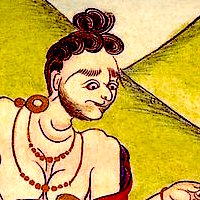
Jayānanda ཛ་ཡཱ་ནནྡ།། ("Crow Master")
11th - 12th century
Mahasiddha #58
A Tantric Buddhist master practicing in Bengal during a time when Buddhism was illegal, Jayananda was exposed by a jealous neighbor and imprisoned by the anti-Buddhist king. Before being captured though, he had befriended and fed a big flock of crows. In Tibetan culture crows are considered bad omens, capable of bringing great harm, and feared. But in a symbol of tantric transformation, Jayananda had made the crows allies. Then—metaphorically as crows or symbolically as an inclusion of the negative—the king was upended, reduced to hiding under his thrown, and as a consequence became a great and influential siddha himself. Mahasiddha #58
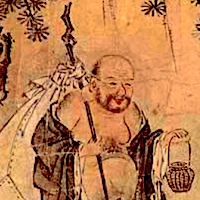
Kakuan Shien 廓庵師遠 (Kuo-an Shih-yuan, Kuòān Shīyuǎn )
1100 – 1200 CE
Most popular Ten Bulls artist/poet
Chan Buddhist monk, artist, and poet; Kakuan expanded on an old Taoist story that used an ox and herding as symbols for the spiritual path. He added two new pictures to a previous version that had 8 and published his new verses and pictures in c, 1178. These new additions emphasized returning to the world and linking closely realization with everyday life. Dramatically symbolizing the path to enlightenment, his rendition became the most popular then and continues to hold that position today in spite of many newer attempts. Exemplifying the close connection between Taoism and Zen, his Ten Bulls became closely identified with Zen in general as well as a continual source of inspiration for students.
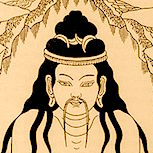
Kālapa ཀཱ་ལ་པ། ("The Handsome Madman")
12th century CE
Mahasiddha #27
So handsome people in the street would stop to stare at him, Kalapa suffered from the paparazzi effect, the stalking and complete loss of privacy. To escape his unwanted fame, he moved into a remote cremation ground where he met an enlightened teacher. This led to his practice of dissolving the delusion of separation between self and other, “uninhibited action,” and communication with people without restraint, political correctness, or concern for praise and blame. Becoming known as a divine madman, he challenged status quo assumptions, prejudice, and belief systems. Last of the traditional 84 Mahasiddhas, Kalapa established the Kalacakra lineage.Mahasiddha #27

Kaṅkaṇa ཀངྐ་ཎ་པ། (“The Siddha-King”)
11th century CE
Mahasiddha #29
A prosperous king addicted to indulging his every whim and desire, Kangkana met a wandering wise man who pointed out how empty his life was - like a mouse on a treadmill chasing imaginary pleasures. Kangkana realized the truth of this but not wanting to abandon his position and kingdom to become an ascetic asked for a practice he could do while remaining a king. This practice taught him the oneness of experience and he transcended the differences between pleasure and pain, loss and gain, stress and strain. Mahasiddha #29
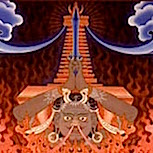
Khaḍgapa ཁཌྒ་པ། ("The Fearless Thief")
10th century CE
Mahasiddha #15
Hiding in a cremation ground after a failed robbery, Khadgapa met Carpati, an enlightened yogi and asked for some meditation practices that would make him into an invincible, uncatchable thief. Carpati gave him practices and instructions for finding the “radiant sword of undying awareness.” Khadgapa thought this sword would cut his physical enemies but instead it cut through his real foes: anger, hatred, aversion, desire, greed, sloth and stupidity. In spite of his life of crime, Khadgapa became a great Mahasiddha himself proving that any lifestyle and profession can launch the highest realizations. #15
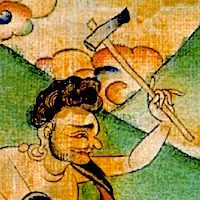
Koṭālipa ཀོ་ཊཱ་ལི་པ། ("The Peasant Guru")
1084 CE –
Mahasiddha #44
Kotalipa ཀོ་ཊཱ་ལི་པ། “The Peasant Guru” (2nd half of eleventh century)
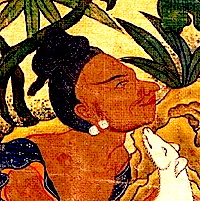
Kukkuripa ཀུ་ཀྐུ་རི་པ། ("The Dog Lover")
915 CE –
Mahasiddha #34
Kukkuripa “The Dog King” ཀུ་ཀྐུ་རི་པ། (10th century CE)
A wandering ascetic, Kukkuripa found and adopted a starving dog brought it back with him to the cave where he lived and meditated. Kukkuripa’s meditation practice took him to pleasurable, psychological god realms but memories of his dog connected him back to the real world where he saw his loyal dog sad, thin, and starving. Spurning the luxury, comfort and extravagance; he returned to the cold, dark, very uncomfortable cave out of compassion for the dog. The dog then became his teacher blending his mind-stream with the deepest insight of all the Buddhas. Naropa sent Marpa to study with him and he became one of Marpa’s most important teachers, famous for his songs of realization, and a “patron saint” for all the downtrodden and oppressed. Mahasiddha #34
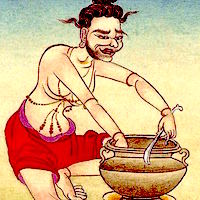
Kumbharipa ཀུམྦྷ་རི་པ། (“The Eternal Potter”)
10th century CE
Mahasiddha #63
Kumbharipa was a potter bored into despair by the repetition and meaningless tedium of his profession of making pottery. Deeply depressed and on the verge of suicide, he met a teacher who pointed out the universal nature of his unhappiness and suffering. Pointing out the symbolic understanding of the pottery wheel being like the wheel of life, our passions and thoughts being like the clay, and 6 pots being like the 6 realms; Kumbharipa practiced this insight and became enlightened entering a Lao Tzu type wu wei state with the “potter’s wheel spinning by itself and pots spring from is a joy sprang from this potter’s heart.” Mahasiddha #63

Lin Mo Niang 林默娘
970 CE –
Lin Mo Niang (silent girl) 林默娘 akaMa Zhou, Mazu, Matsu, Tian Hou (c. 970)
"Empress of Heaven,”patron of seafarers, Confucian, Taoist and Buddhist adept, rainmaker, and Fujianese shamaness from an impoverished and uneducated fishing village where no one could read; Lin Mo Niang lived during a time of mass migrations from China’s north when refugees blended their culture with her local one. Most popular today in Taiwan but banned in Mainland China, her following called Mazuism has over 1500 temples in 26 countries, and statures as high as 139’ (42.3 meters). Equated with Guan
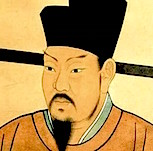
Lu Huiqing
1031 – 1111 CE
Ally to Wang An-shih and aid to his political reform, Lu Huiqing’s commentaries demonstrate his deep Taoist understanding and ability to apply Lao Tzu’s insights and suggestions to his contemporary political and social situation. A seminal resource for Chiao Hung, the Emperor Shenzong of Song requested and received these commentaries in 1078 and used them to strategize and implement radical new policies to improve the situation for peasants and the unemployed. These reforms foreshadowed and helped inspire the modern welfare state.
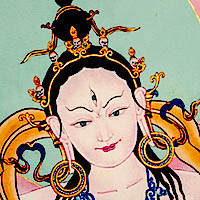
Machig Labdrön མ་གཅིག་ལབ་སྒྲོན།
1055 – 1149 CE
Nun, mother, wandering yogini, mind Stream emanation (tulku) of Yeshe Tsogyal that later became Jetsun Rinpoche; Machig Labdrön came from a Bön family and blended these shamanistic teachings with Buddhist Dzongchen to develop several Tibetan Vajrayana lineages as well as Mahamudra Chöd—a Prajñāpāramitā practice of “Cutting-Through-the-Ego” and experiencing emptiness. A child protege and scholar at a very early age, she left a comfortable and honored place in a monastery to wander and live with beggars and sleep wherever she found herself. Though criticized for having children, her teaching became so popular they spread from Tibet to India. In Tibet, it’s said she overcame the patriarchal bias of her times and gave teachings to as many as 500,000. Her lineage continues the Mahasiddha tradition of India and the Crazy Wisdom teachings of Tibet.
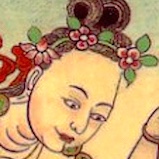
Manibhadra
10th C. CE
One of the 84 Mahasiddhas in the Tibetan Buddhist tradition and described as the “Happy Housewife’ siddha” and “Model Wife,” Manibhadra as a teenager met her teacher Kukkuripa and bravely followed him into the cremation grounds where she began practicing Vajrayana. Instead of leaving the conventional world to practice though, she married, had children and brought her spiritual practice into her daily life demonstrating the sacredness and enlightenment in the simple, ordinary world and becoming an exemplar to householders.
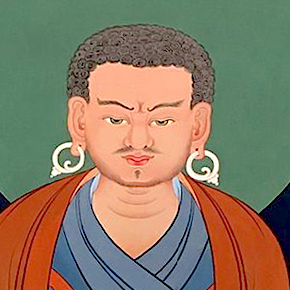
Marpa Lotsawa
1012 – 1097 CE
Founder of the Kagyu lineage of Tibetan Buddhism, teacher to the great Milarepa, businessman, farmer, family man and exemplar of enlightenment in everyday life; Marpa made many, perilous journeys to India and Nepal where he studied Vajrayana teachings, translating and bringing them back to Tibet. Wild, uncompromising, and outrageous; he flourished on physical dangers, psychological and spiritual challenge bringing “tasting the flavor of realization” into his translations that went to the depth of understanding rather than staying on the surface of the words.
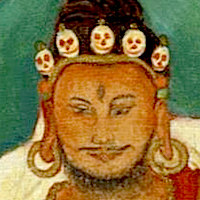
Mekopa མེ་ཀོ་པ། ("Guru Dread-Stare")
1050 CE –
Mahasiddha #43
Mekopa, མེ་ཀོ་པ། Guru Dread-Stare (11th century)
Always cheerful and kind Bengali food merchant taken as a student by a yogin customer, Mekopa saw into the vastness of his own mind, the uselessness of chasing desires, and harmfulness of action based on duality. His realization led him far beyond the limits of status quo, conventional social standards and behavior; into a lifestyle unbound by concern for people’s opinion, wandering about a cremation ground “like a wild animal” and into towns like a mad saint with dreadful, staring eyes. Mahasiddha #43
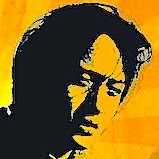
Milarepa རྗེ་བཙུན་མི་ལ་རས་པ།
1052 – 1135 CE
Black magician enemy-killing sorcerer transformed into a great Tibetan folk hero, poet, singer-songwriter and saint; Milarepa always refuted any hero worship or deification stressing his humble background and realization that anyone could achieve. Overcoming powerful, psychological demons, he left far behind fame, fortune, pleasure, power, even companionship and after many years of solitary meditation wandered throughout Tibet teaching and leading students to illuminating, egoless, complete sanity beyond the corruptions of a belief in a separate self. Profound without pretense, ageless because authentic, livable because so simple; Milarepa’s teaching and inspiration continues.
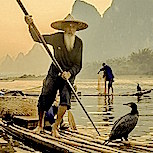
Minapa མཱི་ན་པ། (Macchaendra, Matsyendra, "The Hindu Jonah")
10th Century CE
Mahasiddha #8
Bengali fisherman, “India’s Jonah,” a hunter who became the hunted and swallowed by his prey; Minapa unexpectedly and unintentionally heard some highly secret dharma teachings, practiced alone for 12 years and then became a famous mahasiddha and teacher. Protector deity of Nepal, bringer of rain in drought, and original science of yoga teacher; Minapa is also revered in Nepal as the bringer of the first rice seeds. A symbol for the wisdom born in solitude and the journey into deep subconscious depths, he’s know for saying, “What a precious jewel is one’s own mind.”
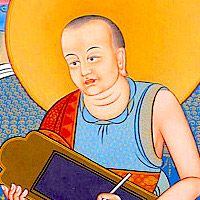
Mondup Sherab
12th century CE
Obscure, Tibetan 12th century monk and translator, student of Abhayadattashri
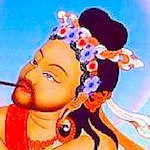
Nāropā
955 – 1040 CE
Born a high status Bengali Brahmin, Nāropā became a great debater, scholar, Nalanda abbot, and “Guardian of the Northern gate.” In a famous encounter with his teacher, Tilopa, he realized that he only understood the words of the teachings, not the true sense and began a journey that defines the criteria for lineage holders on this list. An important teacher to many enlightened teachers and mahasiddhas including Atisa, Maitripa, Dombipa, Marpa and many other Tibetans who took these teachings to Tibet where they flourished as they were destroyed in India by an Islamic invasion said to have killed over 400 million people.
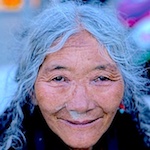
Niguma
11th C. CE
“Dakini of timeless awareness,” co-founder of the “secret lineage,” the Shangpa Kagyu school of Vajrayana Buddhism, wife and later disciple of mahasiddha Naropa, teacher to Marpa the translator; Niguma wrote 13 books basic to the Tibetan Buddhist tradition and had a deep and continuing influence on the foundations and practices of Buddhism in Tibet and other countries. One of the most important and influential teachers of her time, she established a complete set of spiritual practices called the Six Yogas of Niguma that is still practiced, studied and greatly appreciated today.
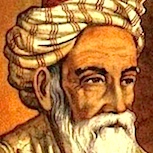
Omar Khayyám
1048 – 1131 CE
Persian Astronomer-Poet, prophet of the here and now
In the west most famous for his poems but Omar Khayyam was also a political advisor, “philosopher of the world,” one of the most influential scientists of his era, “one of the greatest mathematicians of medieval times,” and “without equal in astronomy and philosophy.” A prophet of the here and now, mystical Sufi teacher and free-thinker who rejected theology; he reformed the Persian calendar to a form more accurate than our own today, wrote the most important until modern times book on algebra as well as many others on astronomy, geography, and mechanics. His poems—known as the Rubáiyát—not only rejected Islamic belief and Christian morality, but the nature of religion itself.
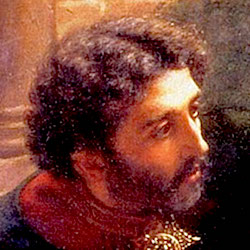
Peter Abelard Pierre Abélard
1079 – 1142 CE
Peter Abelard, Pierre Abélard (1079 – 1142)
Described as "the keenest thinker and boldest theologian of the 12th Century,” Abelard was on a strong path to becoming a pope when he fell in love with Héloïse and instead wrote some of the most important books of his era while becoming a legend in the history of romantic love, of inner certainty over external, status quo coersion. In his early life, thousands of students coming from many countries came to hear him teach. His fame and admiration immense, but his love of Héloïse led to his castration by her uncle, his becoming a monk, and her becoming a nun. This challenged the physical side of their relationship but their deep emotional bond continued through letters written the rest of their lives.

Shantipa ཤཱནྟི་པ། ("The Academic")
late 10th to mid-11th century
Mahasiddha #12
“Keeper of the Southern Gate,” student of Naropa, teacher of Atisa, and an academic famous throughout ancient India; Shantipa was invited by the king of Sri Lanka to teach his people. He visited the island with 2000 monks and big baskets of Dharma texts carried by horses and oxen. Welcomed by the people with joy, openness, and excitement, he taught the Buddhist teachings for 3 years and received immense and valuable gifts, honor and fame. Returning to India he met one of his earlier disciples, Kotalipa who had become a Mahasiddha himself. This made Shantipa realize that he was seduced the words of his own teachings and had missed the sense. He became a disciple of his disciple, began his practice again at a very old age, and eventually realized the sense beneath the words he had expounded for so many decades.

Shen Kuo 沈括 (Mengxi)
1031 – 1095 CE
Greatest scientist of his age, statesman, inventor, poet, finance minister, horticulturalist, engineer, art critic, diplomat, military general, musician, and commentator on ancient Daoist texts; Shen Kuo discovered the magnetic compass needle and the concept of true north which revolutionized navigation 400 years before known in Europe, popularized Bi Sheng’s invention of moveable type 400 years before Gutenberg, researched and described climate change, made the first raised-relief map, described UFOs and beneficial insects, re-discovered an ancient Chinese surveying tool unknown in Europe until 1321. Politically aligned to Wang Anshi, he was impeached, exiled and spent his older years with the "nine guests" — playing music, weiqi (Go), Chan meditation, painting, tea, alchemy, poetry, conversation and wine.
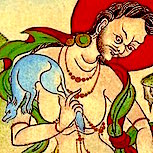
Shyalipa ཥྱ་ལི་པ། (Śyalipa, "The Jackal-Yogin")
1000 – 1100 CE
Mahasiddha #21
A poor laborer terrified of jackals but living on the edge of a cremation ground full of jackals, Shyalipa became so terrified he couldn’t sleep at night and only a little during the day when he dreamed about jackals. Kind to a wondering teacher who gave him a practice called “the fear that destroys fear,” he learned to meditate on the jackal howls until he could recognize the indivisibility of emptiness and sound, the complete appreciation of his self-liberated fear. Rather than running away from his terror or trying to get rid of it, he leveraged overcoming his fear of jackals to overcoming his fear of death and the suffering of life, he “destroyed his fear with fear,” and wearing a jackal skin became an important teacher himself. Mahasiddha #21
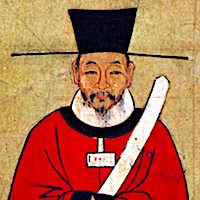
Sima Guang 司马光
1019 – 1086 CE
"Greatest of all Chinese historians”
“The greatest of all Chinese historians,” politician, scholar-official, and major cat-breeder; Sima Guang opposed Wang Anshi's reforms to help the poor against the rich but wrote a pioneering, universal history of China that influenced the world’s political evolution. Also a lexicographer, he spent decades writing his time’s most comprehensive dictionary that included 31,319 Chinese characters. His book, Family Precepts (司馬溫公家訓) became a powerful influence on both Chinese and Japanese culture. A genius with a monumental memory, Sima’s quick thinking when he was only 7 famously saved the life of his friend. He loved reading "to the point of not recognizing hunger, thirst, coldness or heat” and when involved with a complicated writing project, he slept on a wooden log so he would sleep less and be able to work more. His scholarship—far from just intellectual speculation—became a guiding force for emperors but during his life and after his death.
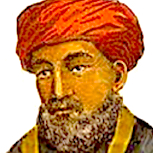
Solomon ibn Gabirol שלמה בן יהודה אבן גבירול (Avicebron)
1021 – 1070 CE
The greatest poet of his age, a Jew for over 600 years regarded by Moslems as a Muslim and by Christians as a Christian, believed a Christian by William of Auvergne who called him “the noblest of all philosophers;” Gabirol grew up in hardship and wandered for years in such poverty that “a fly could now bear me up with ease.” A huge influence on both Christianity and Islam, he championed reason over faith, compiled a book of proverbs independent from Judaism that included wisdom sayings from China, and wrote one of the greatest poems in all of Hebrew literature.

Su Che 呂洞 (Su Zhe)
1039 – 1112 CE
Great writer of the Tang and Sung dynasties
Famous politician and essayist, one of "The Eight Great Men of Letters of the Tang and Song Dynasties,” exiled for his political criticisms; Su Zhe skillfully criticized social conditions in an effort to influence the emperor into creating better living situations for the common person. Champion of reforms to help the poor and protect them from the rich and powerful and also to help the rich realize that their hoarding and selfishness only made them more vulnerable to revolt, robbery, and revolution. The temple where he lived and taught is now a museum and one of China’s more famous cultural attractions.
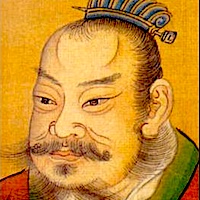
Su Shi 苏轼 (Dongpo, Su Tungpo)
1037 – 1101 CE
"pre-eminent personality of 11th century China"
Writer, statesman, poet, painter, calligrapher, pharmacologist, and important political figure; Su Shi wrote some of his time's most well-known poems and prose as well as essays on topics from travel to the iron industry. An exceptional and highly honored scholar, while serving in the Hangzhou government, he constructed the famous pedestrian causeway across West Lake. His poems got him into political trouble leading to two long exiles and imprisonment; but also, they brought him a fame that spread to many other countries and continues today. His poems on Buddhist topics became an important influence on Dōgen, founder of the Zen Sōtō school.
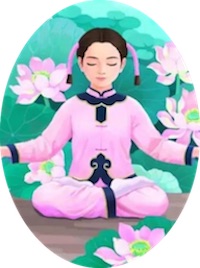
Sun Bu'er
1119 – 1182 CE
Sun Bu'er 孫不二 (1119 – 1182)
Taoist priestess, one of the Seven Masters of Quanzhen, mother of 3, beautiful, intelligent, wealthy, and known as “Clear and Calm Free Human;” Sun Bu'er founded the Purity and Tranquility School and wrote many famous poems and secret Taoist texts. She developed a “science of essence” concerned with psychologically going beyond the influence of both inherited personality and learned conditioning as well as a “science of life” developing ways to increase health and energy. Destroying her beauty to prevent male attack, she became the only woman included in the famous Taoist “Seven Perfected,” and through the ages a role model and inspiration for women following a spiritual path.
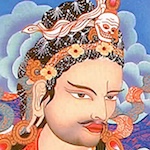
Thaganapa
11th C. CE
A low-caste, compulsive liar, Thaganapa’s entire life depended on his lies, deception, and scams. One day he met a monk who saw through, confronted, and challenged him to lead a better life. Thaganapa asked for teachings and the monk gave him a practice of using deception as an antidote to deception teaching him that everyone’s experience is deceiving from the beginning, that everything is a lie. He meditated on this for 7 years and then on all as emptiness until he became enlightened himself and taught a path of resolving paradox and unifying conflict.
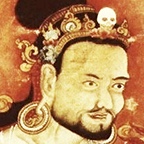
Tilopa
988 – 1069 CE
Born a king, Tilopa - like the Buddha - wasn’t that impressed by fame and fortune and left everything to go on a spiritual search. When he met the teacher Nagarjuna though, he was told to return to his kingdom and kingship. He saved his country during a war with non-violence. He later became a monk and scholar but another teacher, Matongha saw pride remaining from his royal caste and advised him to leave, go into the world, and take a job crushing sesame seeds during the day and procuring for a prostitute at night. This led to him becoming a great Mahasiddha, lineage holder and teacher to Naropa.
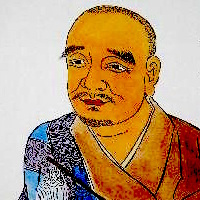
Touzi Yiqing 投子義青 (Tōsu Gisei, “Zen Master of Complete Compassion”)
1032 – 1083 CE
Said to have left his family when only 7 years old to study Buddhism, Touzi came to to the realization that a reliance on words to teach the ultimate truth would always be bound to fail. First leaving one then another tradition, he finally settled into the early Caodong/Soto Zen school and became the dharma heir although he had never met or studied with the previous lineage holder, Dayang Jingxuan. This broke the common practice of direct teacher-to-student transmission and further communicated the depth beneath the words, the heart of understanding under superficial beliefs.
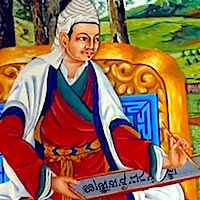
Vyālipa བྱཱ་ལི་པ། ("The Courtesan's Alchemist")
c. 884 - c. 1044
Mahasiddha #84
Vyalipa བྱཱ་ལི་པ། “The Courtesan's Alchemist (10th century)
After 13 years and the loss of all his wealth, alchemist and searcher for the “elixir of immortality,” Vyalipa gave up his dedicated quest, threw his manual in a river, and becoming a wandering beggar. Later a prostitute who found the book as well as the missing ingredient Vyalipa was unsuccessfully looking for, paid him to renew his quest. They discovered elixir but refused to share it and became imprisoned in a deathless, blissful but empty psychological god realm. According to Taranatha though, Vyalipa later returned to the world, shared the secret elixir with Carpati, and became a famous realization-song singer-songwriter. Mahasiddha 84
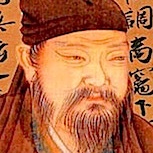
Wang Anshi 王安石
1021 – 1086 CE
Poet, economist, statesman, and one of China’s most famous prime ministers during a time of rampant nepotism and an extreme imbalance between the rich and the poor; Wang initiated major reforms to break up monopolies, expand the civil service examination system, increase currency, and begin social welfare programs to “prevent the working classes from being ground into dust by the rich.” Although removed from power and imprisoned by political rivals, his reforms still ripple through Chinese history. He started public orphanages and hospitals, set up price and wage controls, pension funds for the old, poor, and unemployed — all while writing commentaries on Lao Tzu and some of China’s most famous poems.

Wang Pang
1044 – 1076 CE
Son of the famous Wang Anshi, Wang Pang became embroiled in political intrigues and in a heated exchange with his father’s rival admitted charges that forced his father to resign. Because of this he was said to have “died from rage.” A scholar of both Taoist and Buddhist texts, he wrote several commentaries; but, if stories about his political life and death are true, he doesn’t seem to have understood them very well. Lao-tzu-chu, Red Pine
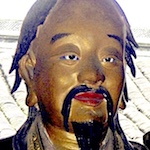
Yuanwu Keqin 圜悟克勤 (Yuánwù Kèqín)
1063 – 1135 CE
Author of the most famous Zen book, The Blue Cliff Record, Yuanwu became a renowned spokesperson for the non-thought lineages teaching a broad, open approach to religion beyond sectarianism, dogma, emotion and ritual that he saw as enemies to true understanding and realization. He left his Confucian family for a Buddhist monastery at a time when Confucianism, Buddhism, and Taoism were mingling and rejuvenating each other. His influence helped the spreading of this powerful force throughout the country and culture.
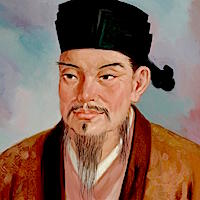
Zhou Dunyi 周敦頤 (Chou Tun-i)
1017 – 1073 CE
First philosopher to popularize the yin-yang symbol, founder of Neo-Confucianism, famous for his authenticity, and major influence on the greatest Confucian thinker since Confucius, Zhu Xi; Zhou Dunyi emphasized living in accord with nature by understanding the relationship between universal forces and the best human conduct. Said to have loved grass too much to cut it, he exemplified the ideal of wu wei. He integrated many Buddhist and Taoist teachings with traditional Confucian concepts. Although an active government official throughout his life, he was mainly unknown and unappreciated working as a simple record keeper (like a modern-day journalist) during much of his life. Later though, one of his books became the basis for neo-Confucian ethics and Zhu Xi called him “the first great sage of the Song Dynasty.”
Chinese Eras
Xia Dynasty 夏 (2100 – 1600 BCE)
Shang Dynasty 殷代 (1600 – 1046 BCE)
Western Zhou 西周 (1046 – 771 BCE)
Eastern Zhou 東周 (770 – 256 BCE)
Spring and Autumn period 春秋时代 (770 – 476 BCE)
Warring States period 春秋时代 (476 – 221 BCE)
Qin Dynasty 秦朝 (221 – 206 BCE)
Three Kingdoms 三國時代 (220 – 280 CE)
Southern and Northern 南北朝 (420 – 589 CE)
Tang Dynasty 唐朝 (618 – 907 CE)
5 Dynasties 10 Kingdoms (907 – 960 CE)
5 Kingdom of Dali 大理国 (937 – 1253 CE)
Western Xia 西夏 (1038 – 1227 CE)
Southern Song (1127 – 1279 CE)
Comments (0)